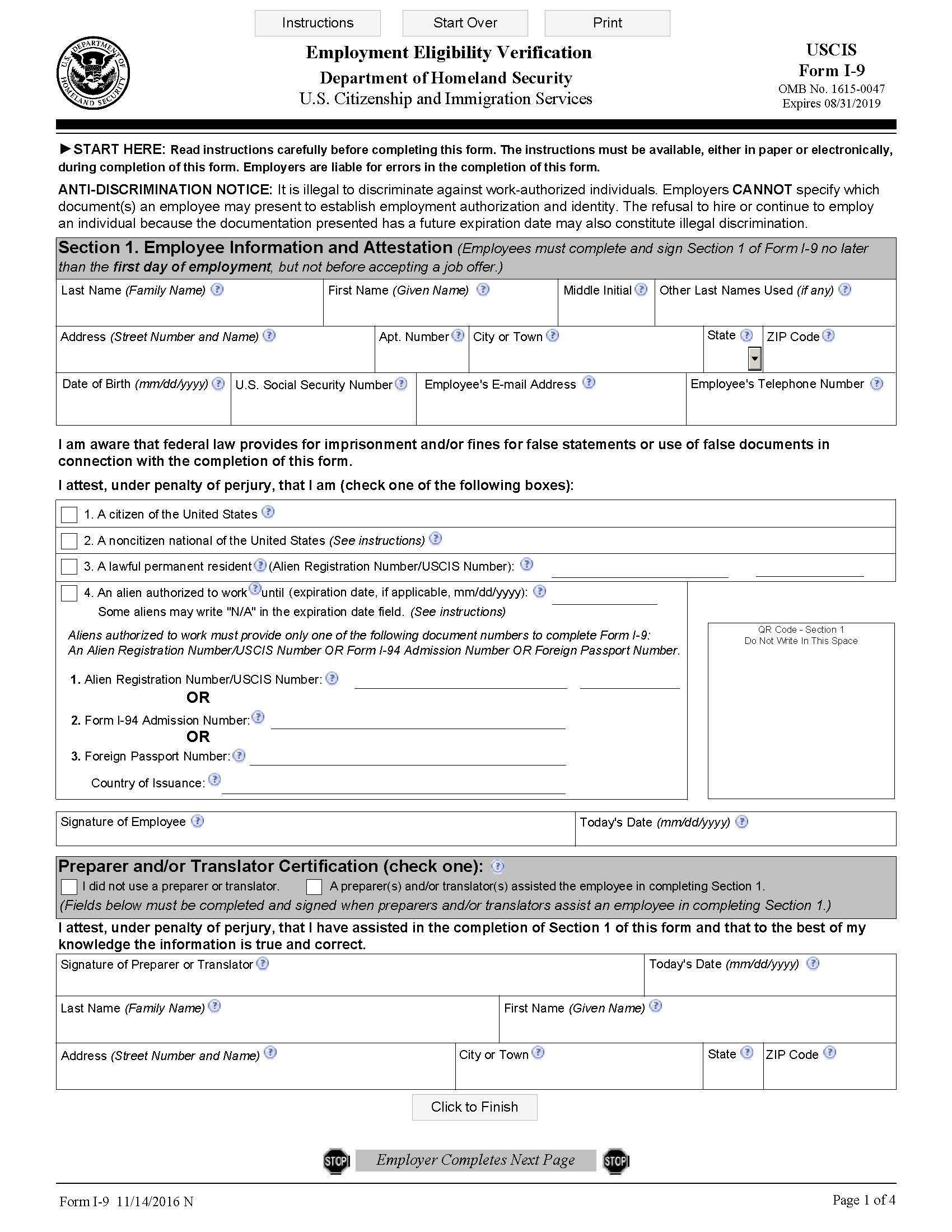The I-9 form, officially known as the Employment Eligibility Verification form, is used to verify the identity and employment authorization of individuals hired for employment in the United States. The I-9 form is required by law for all U.S. employers to complete for every employee they hire, regardless of the employee’s citizenship or immigration status.
Key Purposes of the I-9 Form
- Verification of Work Eligibility:
- The primary function of the I-9 form is to ensure that every individual hired for employment in the U.S. is legally authorized to work. This includes U.S. citizens, lawful permanent residents, and non-citizens who have authorization to work in the U.S.
- Compliance with Federal Law:
- The I-9 form helps employers comply with the Immigration Reform and Control Act (IRCA) of 1986, which mandates that U.S. employers verify the employment eligibility and identity of all employees hired after November 6, 1986.
- Preventing Illegal Employment:
- By requiring employers to verify their employees’ work eligibility, the I-9 form helps prevent the hiring of individuals who are not authorized to work in the U.S. This helps protect employers from penalties associated with employing unauthorized workers.
How the I-9 Form Works?
- Section 1: Employee Information and Attestation:
- The employee must fill out this section, providing personal details such as name, address, and date of birth. They must also attest to their citizenship or immigration status.
- Section 2: Employer Review and Verification:
- The employer is responsible for physically examining the documents provided by the employee, which prove their identity and work authorization. The employer must complete this section within three business days of the employee’s first day of work.
- Section 3: Reverification and Rehires (if applicable):
- This section is used when an employee’s work authorization expires or when an employee is rehired within three years of the original completion of the I-9 form.
Documents Used for Verification
To complete the I-9 form, employees must present specific documents that establish both their identity and work authorization. These documents are categorized into:
- List A: Documents that prove both identity and work authorization (e.g., U.S. Passport, Permanent Resident Card).
- List B: Documents that prove identity only (e.g., Driver’s license).
- List C: Documents that prove employment authorization only (e.g., Social Security card).
Employer Responsibility
Employers must retain completed I-9 forms for a specific period (either three years after the date of hire or one year after the date employment ends, whichever is later) and make them available for inspection by authorized government officials, such as the Department of Homeland Security (DHS) or the Department of Labor (DOL).
Consequences for Non-Compliance
Failure to properly complete, retain, or produce I-9 forms can result in legal penalties, including fines. This makes the I-9 form a crucial part of the hiring and employment process.
In summary, the I-9 form is used to verify that every individual hired in the U.S. is legally authorized to work, and it plays a critical role in maintaining a lawful workforce.
Images Related to What Are I9 Forms Used For



